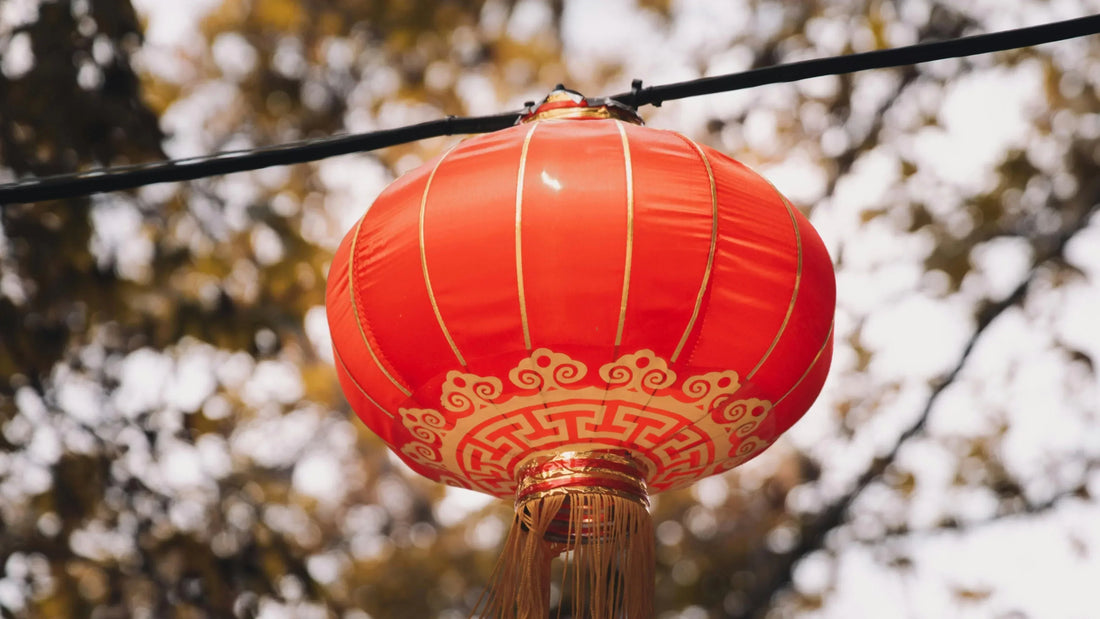Every year, people in China celebrate the Lunar New Year by participating in festivals and other activities that align with the phases of the moon. This holiday is steeped in rich traditions, storied legends, and cultural identity that runs deep within the people. Brilliant red and gold colors bring to life ornate robes adorned by the young and old, fascinating parades that draw people into the cities and towns, and lovely lanterns that dot the sky when they take flight. Here are some incredible facts about the Chinese New Year that kids will find interesting.

Everything to Know About the Lunar New Year
One of the most important holidays in China is the Lunar New Year celebration that spans a 15-day period. Dragons come to life in parades and money is ceremoniously given to children in shiny red envelopes. Processions with lively music and people in ornate costumes make their way through town while people line the streets watching and cheering. For two weeks, Chinese people engage in a host of traditional activities like dancing, lighting fireworks, sweeping their homes, and so much more. Reading children books about the Chinese New Year will teach them all about the interesting customs and traditions.
Fascinating Chinese New Year Customs
Learning about Chinese New Year customs is a truly fun and enriching experience for kids. It's a feast for the senses, offering a vibrant dive into a culture rich with meaning and tradition. You'll discover the deep symbolism behind every element. Red, for instance, isn't just a color; it's a powerful ward against evil and a beacon for good luck. The exhilarating sound of firecrackers isn't just noise; it's believed to scare away mythical beasts. Even the foods tell a story: dumplings symbolize wealth, while fish represents abundance. And the intricate details of lanterns and couplets aren't merely decorations; each carries wishes for prosperity, happiness, and good fortune. Beyond the sensory intrique, exploring these customs provides a fantastic entry point into understanding Chinese culture as a whole. Young children quickly grasp the paramount importance of family reunions, the reverence of ancestor worship, and the foundational values of respect and community. It beautifully illuminates how history, folklore, and aspirations are intricately woven into daily life and grand celebrations.

(1) The legend of Nian is a central theme.
A fierce beast, otherwise known as the New Year Dragon, was believed to live in the depths of the ocean. With a head that looks like a lion with a long horn protruding from the top, this dragon was thought to emerge from the water on the last day of the Lunar New Year to eat people and livestock. The dragon feared the color red, loud noises, and bright lights, so people set off fireworks, draped their homes and bodies in bright red, and strung lights everywhere to stave off an attack.
2) The Lantern Festival occurs on the 15th day of the Chinese New Year.
Colorful lanterns that adorn Chinese homes are much more than beautiful decorations. Just like everything else that is part of the celebration, there is deep meaning behind the ornaments. They symbolize reconciliation, peace, and forgiveness. The purpose of the festival itself is to honor relatives who have passed away, and make amends for anyway ill will that had not been resolved during their lifetime. On a lighter note, little riddles are sometimes written on the lanterns with a small prize for whomever correctly solves the puzzle.
(3)The color red carries a lot of significance.
The Chinese New Year is also known as the Spring Festival, a time for renewal and growth. As such, the color red is culturally meaningful in many ways. It represents prosperity, good fortune, and vitality. Associated with both fire and energy, bold red shades are a central scheme in all of the celebrations.
(4) The young and the old receive red envelopes filled with money.
Interestingly, the most important part of this gift is the envelope itself, not the money placed inside. The red color is meant to bestow happiness, good luck, and energy upon the recipient. They are also believed to ward off evil spirits. Specifically regarding children, the envelopes are intended to protect them from Sui, a Chinese demon known for attacking sleeping young ones on New Year's Eve. For the elderly, their grown children give red envelopes out of respect and gratitude for all they have provided.
(5) Fireworks are set off for purposes beyond entertainment.
Not surprisingly, there is great significance behind the fireworks that are part of every Chinese New Year celebration. First and foremost, the loud noise is believed to stave off an attack from Nian, the deep sea dragon that arises from the water during this time of year. Also, as this is a time to celebrate prosperity, people believe the individual who sets off the very first fire work will receive good luck. And all who watch and participate in the fireworks display will experience peace and fortune for the upcoming year.
(6) All of the food consumed during the holiday is symbolic.
At the epicenter of most holidays is a meal when families come together around the table to enjoy the camaraderie and delicious food. While this is also true during the Lunar New Year festivities, every single item served is deeply symbolic. Longevity noodles, called Changshou Mian, are offered with wishes for a long and healthy life. Tangerines, oranges, pomelos, and other citrus fruits represent prosperity and good fortune. Spring rolls, toasted to a nice golden color, are likened to bars of gold and promise wealth to all who indulge. And fish, a popular dish served for the holiday, means abundance. However, it is customary to leave a plate half-full so that the surplus will carry over until the next year.
(7) People sweep away bad luck.
Before Chinese New Year, families perform a thorough "spring cleaning" of their entire home. This isn't just about tidying up; it's a deeply symbolic ritual to sweep away any bad luck, misfortune, and stagnant energy from the previous year. This extensive cleaning usually takes place in the days leading up to New Year's Eve, often finishing by New Year's Eve itself. It's a comprehensive effort: from sweeping floors and washing walls to decluttering, repairing broken items, and even sprucing up outdoor areas like driveways and garages. By ridding their homes of dirt and clutter, people believe they're creating a clean slate, purifying both their physical space and spiritual realm, and opening their homes to welcome good fortune, prosperity, and blessings for the upcoming year.
(8) The Reunion Dinner is the most important meal of the year.
The Reunion Dinner, held on Chinese New Year's Eve, is a deeply cherished event where family members, regardless of distance, make every effort to come home and celebrate together. It's a powerful symbol of kinship, strengthening familial bonds, and for many, it's the only time the entire extended family gathers under one roof. The dishes served are far more than just food; they're carefully chosen for their auspicious meanings, often based on how their names sound (homophones) or their appearance. Eating these symbolic foods is believed to usher in good luck and prosperity for the new year. Ultimately, this dinner is a profound cultural ritual that reinforces family identity, celebrates tradition, and ushers in hopes for a prosperous and harmonious new year.





